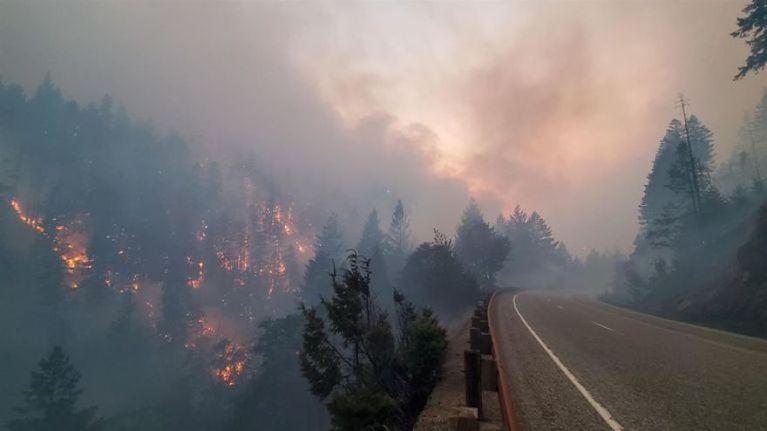
Over the past decade, there’s been a noticeable uptick in wildfires in the Pacific Northwest. With those fires come smoke and air quality issues for surrounding communities.
The Oregon Department of Environmental Quality monitors particulate at more than 20 air quality stations scattered all over the state. At nine of those sites, they’re also monitoring for a host of chemical compounds known to be dangerous to human health. Several of these chemicals were detected at elevated levels during the wildfires of 2020.
“We take VOC (volatile organic compound) measurements every six days and if it happens to overlap with a forest fire smoke plume, then we can see some of that,” said Ben Ayres, a DEQ air quality scientist.
The results of that monitoring were presented at the December meeting of the American Geophysical Union, an association of scientists and science enthusiasts.
Overall, tiny particulate matter — called PM 2.5 — has been the main focus of DEQ’s monitoring. These particulates are so small that they can absorb from the lungs into the bloodstream. They’re associated with respiratory and heart disease, but recent research has shown that the particulates can even pass from the bloodstream into the brain.
But there are other chemicals connected to wildfire smoke that state and federal agencies recognize as cancer risks.
DEQ found some of these compounds were present in locations across Oregon at near or above levels of concern for health impacts other than cancer.
“So benzene and we’ll also see benzo(a)pyrene. We’ve seen very high levels of formaldehyde. All of that is actually not that great for your health. So we want to be able to incorporate that eventually into the app that we use for air quality index,” he said.
Masks that are effective at filtering out particulate matter may not work for compounds like formaldehyde and benzene. More robust filtration would be needed to protect people when the concentrations are high.
Ayres said these elevated levels appear to correspond with elevated levels of wildfire smoke, but the agency only had a limited number of samples to base their analysis on. And the agency also doesn’t know what wildfire fuels – natural or man-made – are the source of these emissions.
“I would like to have a mobile lab where we can actually set up next to a forest fire. If there are structures in there, that could dramatically change how much toxics are coming out,” he said.
This would be valuable information to know for communities like Talent, Mill City and Blue River that burned in the Labor Day fires of 2020.
“Not only do they have to deal with rebuilding, but possibly some health effects. We don’t know that yet,” Ayres said. “That’s the problem. We really don’t know exactly what is coming out.”
This story was originally published by Oregon Public Broadcasting.

